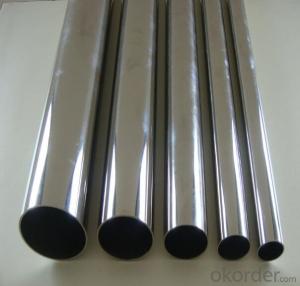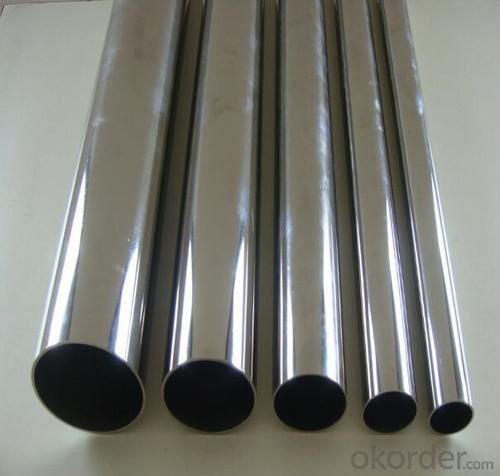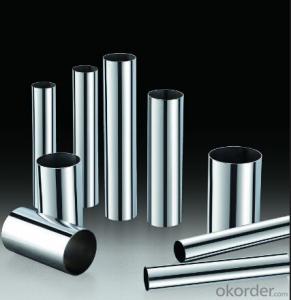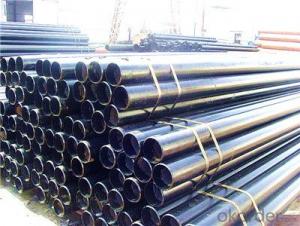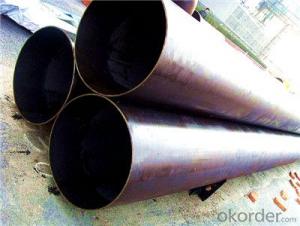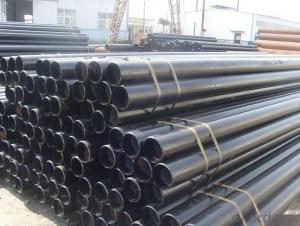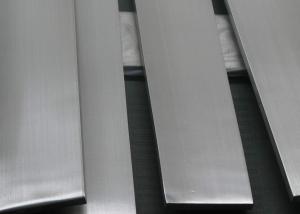Stainless Seamless Round Steel Tube With Good Price
- Loading Port:
- China main port
- Payment Terms:
- TT or LC
- Min Order Qty:
- 100 m.t.
- Supply Capability:
- 10000 m.t./month
OKorder Service Pledge
OKorder Financial Service
You Might Also Like
1、Structure of Seamless Pipe ASTM A106/53:
Seamless pipe is formed by drawing a solid billet over a piercing rod to create the hollow shell, and they are perceived to be stronger and more reliable. Historically seamless pipe was regarded as withstanding pressure better than other types.
2、Main Features of the Seamless Pipe ASTM A106/53:
• Reasonable price
• High manufacturing accuracy
• High strength
• Small inertia resistance
• Strong heat dissipation ability
• Good visual effect
3、Seamless Pipe ASTM A106/53 Specification:
Standard | GB, DIN, ASTM ASTM A106-2006, ASTM A53-2007 |
Grade | 10#-45#, 16Mn 10#, 20#, 45#, 16Mn |
Thickness | 8 - 33 mm |
Section Shape | Round |
Outer Diameter | 133 - 219 mm |
Place of Origin | Shandong, China (Mainland) |
Secondary Or Not | Non-secondary |
Application | Hydraulic Pipe |
Technique | Cold Drawn |
Certification | API |
Surface Treatment | factory state or painted black |
Special Pipe | API Pipe |
Alloy Or Not | Non-alloy |
Length | 5-12M |
Outer Diameter | 21.3-610mm |
Grade | 20#, 45#, Q345, API J55, API K55, API L80, API N80, API P110, A53B |
Standard | ASME, ASTM |
4、FAQ of Seamless Pipe ASTM A106/53:
①How is the quality of your products?
Our products are manufactured strictly according to national and internaional standard, and we take a test on every pipe before delivered out. If you want see our quality certifications and all kinds of testing report, please just ask us for it.
Guaranteed: If products’ quality don’t accord to discription as we give or the promise before you place order, we promise 100% refund.
②How about price?
Yes, we are factory and be able to give you lowest price below market one, and we have a policy that “ for saving time and absolutely honest business attitude, we quote as lowest as possible for any customer, and discount can be given according to quantity”,if you like bargain and factory price is not low enough as you think, just don’t waste your time.Please trust the quotation we would give you, it is professional one.
③Why should you chose us?
Chose happens because of quality, then price, We can give you both.Additionally, we can also offer professional products inquiry, products knowledge train(for agents), smooth goods delivery, exellent customer solution proposals.Our service formula: good quality+good price+good service=customer’s trust
SGS test is available, customer inspection before shipping is welcome, third party inspection is no problem.
Any question, pls feel free to contact us !
5、Seamless Pipe ASTM A106/53 Images:
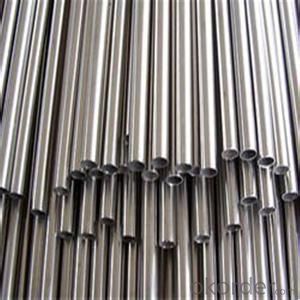
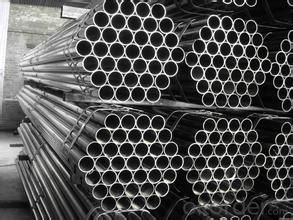
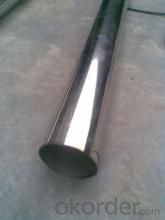
- Q: How do you protect stainless steel pipes from internal corrosion?
- To safeguard stainless steel pipes from internal corrosion, one effective approach is the utilization of a corrosion inhibitor. These inhibitors, which are chemical substances, can be incorporated into the fluid that flows through the pipes. This addition creates a protective layer on the inner surface of the pipe, acting as a barrier that prevents direct contact between the corrosive agents in the fluid and the stainless steel. Multiple types of corrosion inhibitors exist, and the choice depends on the specific application and the nature of the fluid being transported. Examples include organic inhibitors, which generate a protective film on the pipe's surface, and inorganic inhibitors, which interact with the corrosive agents to form less harmful compounds. An alternative method for shielding stainless steel pipes from internal corrosion involves cathodic protection. This technique entails linking the stainless steel pipe to a sacrificial anode composed of a more reactive metal like zinc or aluminum. This connection establishes a galvanic cell, whereby the anode corrodes instead of the stainless steel pipe. By sacrificing the anode, the pipe is effectively shielded from internal corrosion. Regular maintenance and inspection are also vital in preventing internal corrosion. It is crucial to monitor the condition of the pipes, promptly identify any indications of corrosion or damage, and promptly address any issues. Flushing the pipes with clean water or suitable cleaning solutions can aid in the removal of any deposits or contaminants that might contribute to corrosion. Moreover, maintaining the proper composition and pH levels of the fluid is essential in preventing internal corrosion. In certain cases, adjusting the fluid's pH or adding corrosion inhibitors tailored to the specific fluid being transported can significantly decrease the risk of corrosion. In conclusion, the combination of corrosion inhibitors, cathodic protection, regular maintenance, and appropriate fluid management is an effective means of safeguarding stainless steel pipes from internal corrosion. This approach ensures the pipes' durability and optimal performance.
- Q: How do you prevent rusting in stainless steel pipes?
- There are several measures that can be taken to prevent rusting in stainless steel pipes: 1. Keeping the pipes clean regularly is important. Use mild soap or detergent and warm water to remove dirt, debris, and contaminants that can cause corrosion. 2. Avoid using abrasive cleaners, steel wool, or harsh chemicals as they can scratch the surface of the stainless steel and compromise its protective layer. 3. Protect the pipes from exposure to chlorides, such as those found in saltwater or certain cleaning agents. If the pipes are installed in areas with these substances, apply protective coatings or use specialized stainless steel grades that are resistant to chloride-induced corrosion. 4. Proper ventilation is crucial to prevent moisture buildup, which can accelerate the rusting process. Ensure that the stainless steel pipes have adequate airflow to keep them dry and reduce the risk of corrosion. 5. Regularly inspect the pipes for signs of rust or corrosion. If any damage or rust spots are detected, address them promptly to prevent further deterioration. 6. Consider passivation, a chemical treatment process that enhances the corrosion resistance of stainless steel. This involves removing contaminants from the surface and promoting the formation of a protective oxide layer. It is recommended to have professionals with experience in handling stainless steel perform the passivation process. 7. In certain cases, cathodic protection can be used. This involves using sacrificial anodes or impressed current systems to create an electrochemical reaction that protects the stainless steel from corrosion. By following these preventive measures, the risk of rusting in stainless steel pipes can be significantly reduced, ensuring their longevity and durability.
- Q: Are stainless steel pipes suitable for oil drilling rigs?
- Yes, stainless steel pipes are suitable for oil drilling rigs. Stainless steel is highly corrosion resistant, which is crucial for oil drilling operations that involve contact with harsh and corrosive substances such as oil, gas, and drilling fluids. These pipes can withstand the high pressure and extreme temperatures often encountered in drilling environments. Additionally, stainless steel pipes have excellent mechanical properties, such as high tensile strength and toughness, making them durable and reliable for use in oil drilling rigs. They also have a long lifespan, reducing the need for frequent replacements and maintenance, which is essential for the cost-effectiveness of drilling operations. Overall, stainless steel pipes are an ideal choice for oil drilling rigs due to their corrosion resistance, durability, and high performance capabilities.
- Q: What is the difference between 304 and 304L stainless steel pipes?
- The carbon content is the primary distinguishing factor between 304 and 304L stainless steel pipes. 304 pipes contain a maximum of 0.08% carbon, while 304L pipes have a maximum of 0.03% carbon. The reduced carbon content in 304L pipes helps prevent carbide precipitation during welding, which can cause intergranular corrosion. 304L stainless steel pipes are more resistant to sensitization, a process where chromium carbides form at grain boundaries, leading to decreased corrosion resistance. This makes 304L pipes ideal for applications in high-temperature and corrosive environments, such as the food processing industry or chemical plants. Both 304 and 304L stainless steel pipes exhibit similar mechanical properties in terms of strength and hardness. However, the lower carbon content in 304L pipes may result in slightly higher tensile and yield strength compared to 304 pipes. Additionally, 304L pipes possess improved welding and forming characteristics, making them more manageable during fabrication. To summarize, the principal distinction between 304 and 304L stainless steel pipes lies in their carbon content. The lower carbon content in 304L pipes reduces the risk of sensitization and carbide precipitation during welding, making them better suited for applications in high-temperature and corrosive environments.
- Q: Mechanical properties of stainless steel tubes
- High temperature fatigue is the process of damage to fracture due to repeated stress changes in the material at high temperature. The results show that, at a certain high temperature, the fatigue strength of the 8 power high temperature of 10 is 1/2 of the high temperature tensile strength at this temperature.
- Q: Can stainless steel pipes be insulated with polysulfone?
- Yes, stainless steel pipes can be insulated with polysulfone. Polysulfone is a high-performance thermoplastic material that offers excellent thermal insulation properties. It can be easily molded or applied as a coating onto the stainless steel pipes to provide insulation and maintain the desired temperature of the fluid being transported.
- Q: Are stainless steel pipes suitable for sanitary applications?
- Yes, stainless steel pipes are highly suitable for sanitary applications. Stainless steel is known for its excellent corrosion resistance, durability, and hygienic properties, making it an ideal choice for environments that require cleanliness and sanitation, such as food processing plants, pharmaceutical facilities, and hospitals. Stainless steel pipes are non-porous, which means they do not absorb or retain bacteria, contaminants, or odors. They are also easy to clean and maintain, ensuring the highest level of hygiene. Additionally, stainless steel pipes can withstand high temperatures and pressures, making them suitable for a wide range of sanitary applications.
- Q: What are the common joining methods for stainless steel pipes?
- Stainless steel pipes can be joined using different methods, including welding, threaded connections, and flanged connections. Welding is the most commonly used method for joining stainless steel pipes. By melting the pipe ends and using a welding electrode, the pipes are fused together. Depending on the application's requirements, various welding techniques like TIG welding, MIG welding, or Stick welding can be employed. Threaded connections are another popular method, especially for smaller diameter pipes. This involves threading the ends of the pipes and using threaded fittings to connect them. Threaded connections are easy to install and disassemble, and they provide a secure and leak-proof joint. For larger diameter pipes or situations requiring easy disassembly and reassembly, flanged connections are used. This method involves attaching flanges to the pipe ends and connecting them using bolts and gaskets. Flanged connections offer a reliable and rigid joint, commonly used in industrial applications that require frequent maintenance or replacement. It is important to consider various factors such as pipe diameter, pressure and temperature requirements, accessibility, and the specific application when choosing a joining method for stainless steel pipes. Consulting with a qualified engineer or professional is recommended to ensure the most appropriate method is selected for a specific project.
- Q: Can stainless steel pipes be used in the food processing industry?
- The food processing industry can make use of stainless steel pipes. Stainless steel is a preferred option in food processing because it possesses numerous advantageous qualities. Firstly, stainless steel's resistance to corrosion is vital in an environment where food and liquids are constantly being handled and processed. Additionally, stainless steel's easy maintenance and cleaning are crucial for ensuring hygiene and preventing contamination in food processing. Stainless steel pipes are also highly durable and strong, enabling them to withstand the demanding conditions of the food processing industry. Furthermore, stainless steel does not react chemically with food or ingredients, ensuring that the quality and taste of processed products remain unaffected. Overall, stainless steel pipes are an exceptional choice for the food processing industry due to their resistance to corrosion, cleanliness, durability, and non-reactive properties.
- Q: What is the difference between 304J8 and 316J8 stainless steel pipes?
- The main difference between 304J8 and 316J8 stainless steel pipes lies in their composition and corrosion resistance. 304J8 stainless steel contains 18% chromium and 8% nickel, making it suitable for general-purpose applications. On the other hand, 316J8 stainless steel contains 16% chromium, 10% nickel, and 2% molybdenum, providing increased resistance to corrosion, especially in environments with chlorides or acids. Therefore, 316J8 stainless steel pipes are often used in more demanding applications such as marine environments or chemical processing plants.
Send your message to us
Stainless Seamless Round Steel Tube With Good Price
- Loading Port:
- China main port
- Payment Terms:
- TT or LC
- Min Order Qty:
- 100 m.t.
- Supply Capability:
- 10000 m.t./month
OKorder Service Pledge
OKorder Financial Service
Similar products
Hot products
Hot Searches
Related keywords
